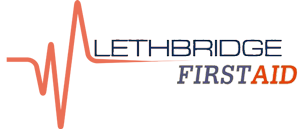Handling children is one of the most difficult things health care workers have to face. They are very different from adults; their bodies are immature and so are their minds and emotions. Parents rarely leave the bedside in order to keep their children calm. The same goes for pediatric medical conditions. Management of ailments that affect children is not only different because of their tendency to become anxious and act out, but also because their bodies cannot take the stress of an illness as well as an adults. Their organ systems experience dysfunction and fail much sooner.
PALS at Lethbridge First Aid
Lethbridge First Aid offers health care providers Pediatric Advanced Life Support (PALS) training. It is a two-day program that is available all through the week. Signing up for the PALS program is as easy as filling up the form below. Contact us during business hours from 8 AM to 5 PM so our staff will be available to help you with your queries.
Pediatric Management
If you work with children regularly (such as pediatric nurses), you know that handling them is very difficult. Very young children are very attached to their parents and even school-age children can get anxious if they do not see their parents/guardians in the same vicinity. When it comes to their treatment, they may refuse or put up a fuss – we prepare all our students for this kind of situation.
Other than the child’s disposition, pediatric management is very different from adult management. Because their systems are immature, they cannot be subjected to the same amount of medication as an adult. Their recovery times are slower, as well as their kidneys and liver’s ability to filter out toxins from blood. This affects surgery and other similar medical management.
Pediatric CPR
Pediatric CPR is likewise different. Chest compressions aren’t as deep and joules used in defibrillation aren’t as high.
- For infants: use two fingers when giving chest compressions, either both thumbs with hands around the chest or the second and middle fingers. Press down on the sternum, in between the nipples, by a third of the anterior-posterior diameter (usually 1 inch to 1.5 inches).
- For toddlers: Use one hand when giving chest compressions. Same rules apply; push down by a third of the AP diameter of the chest.
- For older children: Same depth and force as adult CPR.
Giving rescue breaths is not at all different from giving breaths to an adult. Tilt the head back if the victim doesn’t have a back or spine injury, pinch the nose, and give two rescue breaths. Watch for the chest rise and fall between breaths. One cycle is composed of 30 compressions and two rescue breaths.
Respiratory problems: Learning about Asthma
One of the most common respiratory problems in children is Asthma. Asthma is a lung condition characterized by shortness of breath and wheezing, which usually worsens during an asthma attack. It is genetic, meaning it runs in the family. When a person is experiencing an attack, a “puff” of short-acting bronchodilator, usually in an inhaler with a spacer is used.
